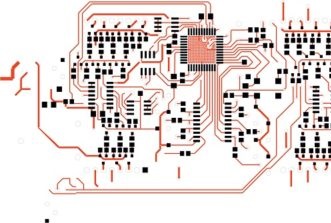This website uses cookies so that we can provide you with the best user experience possible. Cookie information is stored in your browser and performs functions such as recognising you when you return to our website and helping our team to understand which sections of the website you find most interesting and useful.
Cutting-Edge Solar Cell Aims for 45% Efficiency
Researchers in the UK have made a significant breakthrough in solar cell technology at Oxford University. They have successfully developed a multijunction solar cell that can be sprayed onto any surface with an impressive efficiency of 27%, and they are aiming to push this efficiency even further to reach 45%.
The team at Oxford University achieved this milestone by printing multiple thin layers of light-absorbing materials into a single solar cell. This innovative approach allows the cell to capture more energy from sunlight. Remarkably, the solar cell is just over one micron thick, making it nearly 150 times thinner than a traditional silicon wafer. This thinness enables the solar cell to be applied to a wide range of surfaces, opening up new possibilities for solar energy integration.
The newly developed solar cell has been independently certified to deliver over 27% energy efficiency, matching the performance of single-layer silicon solar cells. Dr. Shuaifeng Hu, a Post Doctoral Fellow at Oxford University Physics, highlighted the progress made by the team, stating, “Over the past five years of experimenting with our stacking approach, we have significantly increased the power conversion efficiency from around 6% to over 27%, approaching the limits of what single-layer photovoltaics can achieve today. We are confident that this approach has the potential to drive efficiencies even higher, surpassing 45% in the future.”
Dr. Junke Wang, another Postdoc Fellow at Oxford University Physics, emphasized the importance of using new materials that can be applied as coatings to replicate and surpass silicon-based solar cells while also offering flexibility. He focuses on developing purely perovskite-based multijunction solar cells that can be spray-coated in multiple layers. The complex optical stack in these cells can lead to losses due to parasitic absorption and reflection of light, which can limit the overall efficiency.
Dr. Wang previously worked on an all-perovskite tandem solar cell that utilized surface passivation strategies to reduce non-radiative recombination at interfaces, resulting in a high open-circuit voltage. By incorporating optically benign transparent electrodes and charge-transport layers, the performance of the solar cell was boosted to over 23%. Dr. Wang envisions a future where perovskite coatings could be applied to various surfaces, such as car roofs, building exteriors, and even mobile phone backs, to generate affordable solar power and reduce the reliance on silicon panels and solar farms.














